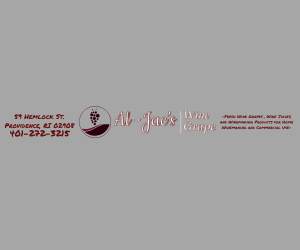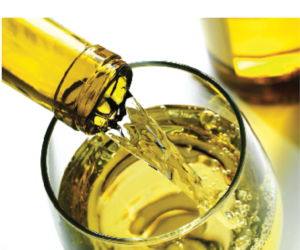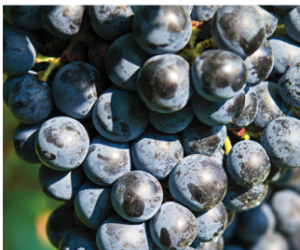There are many different techniques and styles to choose from when it comes to Chardonnay. Do you want a buttery, barrel-aged Chardonnay or a crisp, acidic one? When weighing your options, use this advice from two Chardonnay experts.
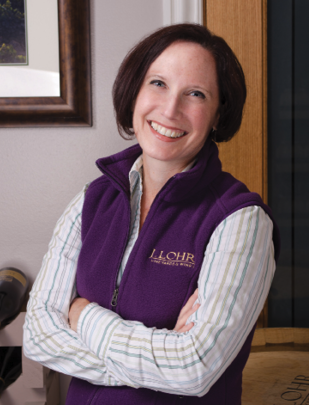
Winemaker: Kristen Barnhisel, J. Lohr Vineyards & Wines, California
Our Chardonnay is largely sourced from the Arroyo Seco and Santa Lucia Highlands AVAs in California. All three of our Chardonnays — the Riverstone, the October Night, and the Arroyo Vista — are partially put through malolactic fermentation (MLF) in barrel. We add malolactic bacteria to most of our Chardonnay lots. Some of our vineyards exhibit bright aromatics and good texture upfront, such that we don’t need them to go through malolactic fermentation to get the balance that we hope to achieve. However, many of our wines benefit from the added texture that malolactic fermentation gives. The bacteria is added one day after the yeast is added, as a co-inoculation. This ensures that the yeast have a chance to firmly start fermentation before the bacteria start to grow. Co-inoculation of yeast and bacteria can be risky, but with proper nutrition (diammonium phosphate, amino acids, and malolactic bacteria food) and yeast/bacteria choices the malolactic bacteria can complete fermentation with minimal diacetyl or butter aromas. All of our Chardonnay barrels are aged sur lie in oak barrels in the classic Burgundian tradition. The lees provide added texture for the wines and prevent oxidation in the aging process. We stir all of our barrels weekly by hand to help maximize the exposure of wine to lees. They stay on the lees until we are ready to blend and bottle the wines.
Certain vineyards or clones (typically Dijon selections) in these regions require acid adjustments to the juice for our style of Chardonnay. We look at both the titratable acidity and the pH to make those decisions because both have an effect on how the wine will taste and how the wine will age. For instance, if the pH is high at over pH 3.50 and the titratable acidity is moderate at 0.60g/100mL, we would consider adding some tartaric acid to keep the wine healthy. But at that same pH, if the titratable acidity is already at 0.85-0.90 g/100 mL, we would likely not add because we want the acid level to be in balance. We look for ideal pH values near 3.35 for the juice that will go through malolactic fermentation, with the knowledge that they will end up at pH 3.45-3.50 by the end. We do add sulfur as well to protect the juice and adjusting the acid will make the sulfur more effective. We look to make these adjustments at the juice stage so that the wine will be healthy while aging in barrels.
We use a few different yeast strains for our Chardonnay. Most often we use CY3079, which is a Burgundian isolate that promotes honey and floral characters and breaks down quickly to catalyze the sur lie aging process. We also use VL2, which enhances Chardonnay aromatic expression.
Temperature control is one of the most important aspects for producing fruity, aromatic Chardonnay. We like to ferment near 55 °F (13 °C) and go through malolactic fermentation at 60–65 °F (16–18 °C) to yield fresher Chardonnay aromas. One last thought, remember to taste the wine regularly while it is aging to see if it needs any adjustments, less or more stirring, or if it’s ready to pump out for bottling.
 WineMaker: Michael Savage, Savage Grace Wines, Woodinville, Washington
WineMaker: Michael Savage, Savage Grace Wines, Woodinville, Washington
The goal with my Chardonnay is to express the Columbia Gorge vineyards they come from and the crisp, richer flavors of the old-vine fruit from that region. For me, that means minimal oak influence and restrained use of malolactic fermentation (MLF). I try to pick with titratable acidity between 7 to 8 grams/L and a pH around 3.1–3.2. The acid will naturally drop some after pressing and settling, and then some more after MLF and cold-stabilization, so at the end it is usually between 6.5 and 7.5 grams/L, with pH around 3.3.
I do two picks for white varietals I work with — an early pick to accentuate acidity and a later pick for riper flavors. Except, for Chardonnay the ripeness is reversed as the first pick is from a lower elevation site that ripens earlier and the second, higher altitude pick has the brighter flavors. All lots are whole-cluster pressed and settled, with the riper portion going into neutral French oak barrels for fermentation and the higher-acid portion racked into tank. I feel like splitting the fermentation barrel and stainless portions gives me the best of both worlds, with more texture and roundness from the barrel fermentation and more fruit and focus from the stainless portion. These grapes stay separate until just before bottling, where the wine is blended and cross-flow filtered.
After fermentation the tank portion is racked off the gross lees, lightly sulfited and kept slightly cool to prevent MLF. The barrel portion stays on the gross lees up to just before bottling. Spontaneous MLF is encouraged with the application of a heated space around the barrels. I’ll monitor MLF progress on the barrels and remove the heat at some point. I’ve experimented with more and less stirring of the lees, but stop after MLF is completed.
I’m gradually moving away from inoculated fermentations, but in the past have used QA23 on the tank portions, which is a clean and strong finisher, and CY3079 on barrel portions, which is much slower going and extends the barrel fermentation. A healthy fermentation and dryness is the main thing I want the yeast to bring.
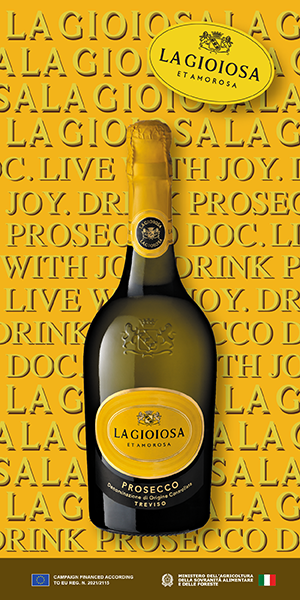
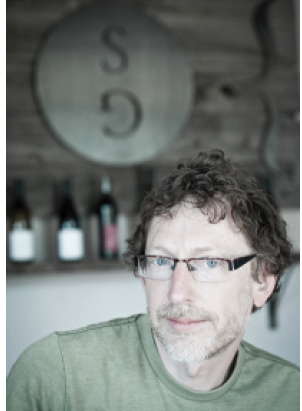 WineMaker: Michael Savage, Savage Grace Wines, Woodinville, Washington
WineMaker: Michael Savage, Savage Grace Wines, Woodinville, Washington